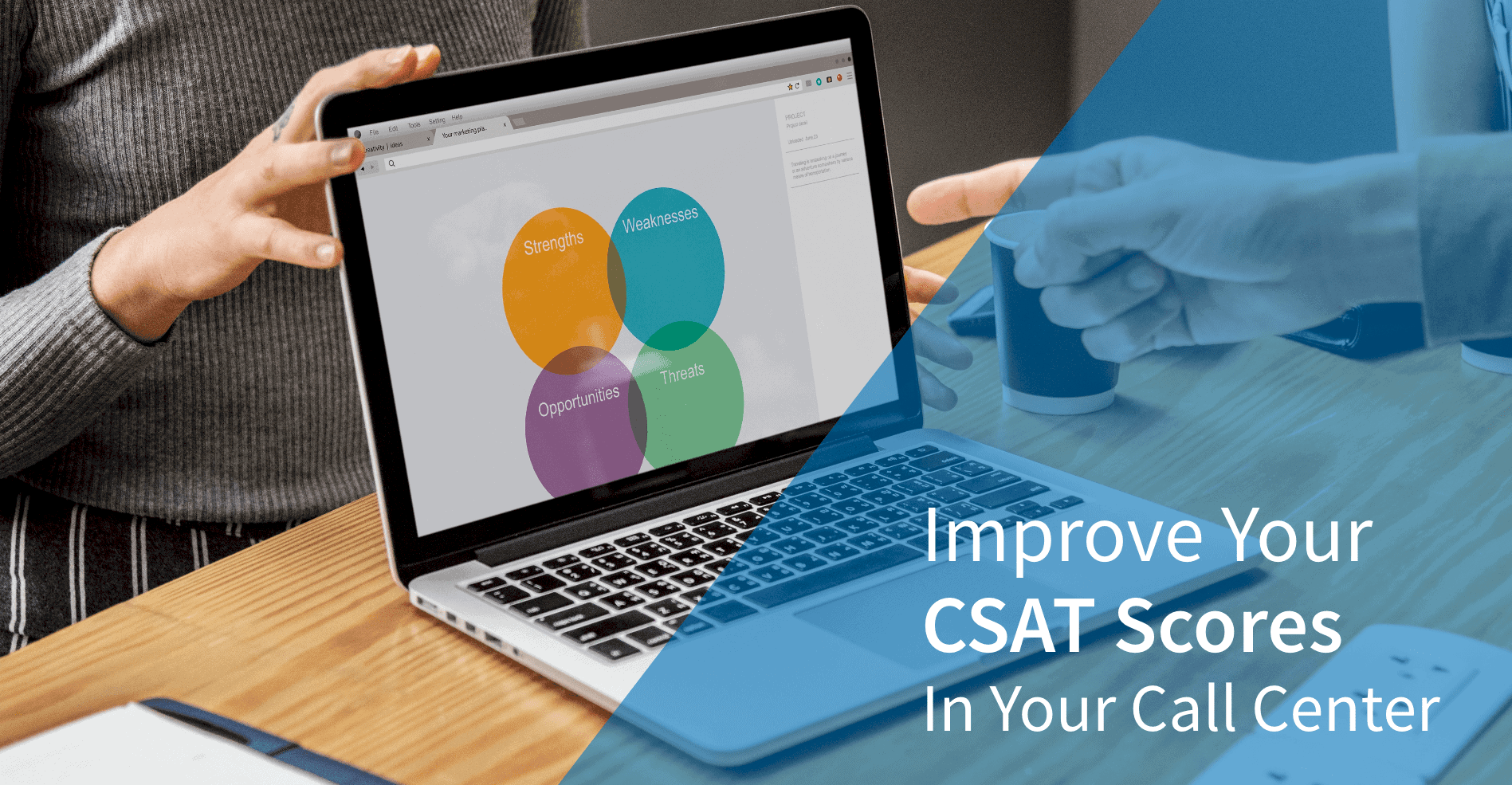How to Improve Call Center CSAT Scores

As an inbound call center manager, you live and breathe customer service. You measure it, and improve it- and one great way to do it is through CSAT scores. Today, we are going to cover some of the best ways to improve customer service in the call center, based on nearly 20 years of experience providing call center software for customer service teams. In this article, we’ll discuss what CSAT means in the call center and how to improve your call center's CSAT score fast.
What does CSAT mean in the Call Center?
CSAT is an abbreviation for customer satisfaction score. Customer satisfaction scores measure how happy customers are, on average, with a company, purchase, or exchange. CSAT in the call center is measured by a variation of the following question on a 1-3, 1-5, or 1-10 scale:
“How would you rate your satisfaction with (company)?”
A call center's customer satisfaction score is measured on a percentage scale, with 100% being complete customer satisfaction, and 0% with no customer satisfaction.
Calculating Your Call Center CSAT Score
Your call center CSAT score is calculated as follows:
CSAT (average) = Sum of all score values / number of all scores
CSAT (percentage) = (number of all positive scores / number of all scores) x 100
How to Increase CSAT Scores in the Call Center
Whether you use CSAT follow up surveys after calls, or simply ask your customers to rate their experience with a Net Promoter Score, you undoubtedly have some method of benchmarking where your company stands when it comes to customer satisfaction. And as we all know, what gets measured gets improved. So, where do you begin when you're ready to improve CSAT scores in your call center? See our list below:
1. Focus on Personal Interactions with Your Customers
While IVR systems can provide call centers with significant cost-savings, they can have a negative impact on customer experience (especially if there is no option to speak with a live agent). Although it may cost you more in the short term to staff more agents to field the calls previously handled by your call center's IVR, you can recoup those costs by retaining more customers; plus, your agents will have the opportunity to up-sell and cross-sell to your existing customers, providing additional revenue streams.
And, you don't have to say goodbye to your IVR system altogether. Most call centers still use IVR as a call routing technique. By offering 2 - 3 simple options, such as "Press 1 for Sales, Press 2 for Customer Service," you can ensure that your callers are routed to the right agent or department the first time.
Studies have shown that more real-time, personal interaction with customers leads to significantly higher call center csat scores. Use your IVR system as a tool to enable and optimize one-on-one interactions with your callers for improved customer satisfaction scores.
2. Implement Advanced Call Routing Strategies
Advanced call routing strategies, such as geographic call routing and skills-based routing, can significantly decrease your call center's average hold time and average transfer rate. In turn, these KPIs have a significant impact on CSAT scores in your call center. With advanced call routing, you can ensure that your callers are sent to the agent who is best equipped to handle their needs.
Use advanced call routing techniques, like skills-based routing and percentage-based routing, to ensure that callers are directed to the right agent the first time that they call. This essential call center software feature allows your business to reduce average hold time and cut down on unnecessary call transfers.
3. Monitor and Track Related Call Center KPIs
Customer service is impacted by many factors, including the number of agents you have on staff, the overall knowledge of those agents, and the level of operational service that your business provides. All of these factors can then be tied to one (or more) key performance indicators, including average hold time, first call resolution, and overall service levels.
If you are searching for ways to improve CSAT scores in your call center, start with the data that is provided by your virtual call center software. Key metrics reports, including total calls answered, total calls abandoned, average hold time, and the number of calls fielded by each agent can provide invaluable insight into your call center's current customer service levels.
Keep an eye on related KPIs, such as first call resolution, as you work to improve CSAT scores in your call center. According to ICMI, call centers see a 1% increase in customer service levels for every 1% improvement in first call resolution.
4. Invest in a Quality Assurance Specialist
As a call center manager, you have a lot on your plate. And while you might have time to listen to a few call recordings during the week, you probably don't have the opportunity to follow up on every quality assurance that you see.
That's why it's important to have a member of your team that is dedicated to monitoring and coaching your agents. And if you're short on budget for staffing, you might consider promoting one of your best agents to this position. An existing agent will already understand your business and will be comfortable with best practices, making the transition into the QA position a little easier.
Consider adding a dedicated member of your team who monitors, tracks, and coaches agent performance. Some small call centers choose to promote qualified, existing agents into this position rather than bringing in a new QA team.
Need Help Improving CSAT Scores in Your Call Center?
Looking for more information on how to improve CSAT scores in your call center? Learn more about inbound call center solutions or contact an AVOXI expert today for a free consultation.